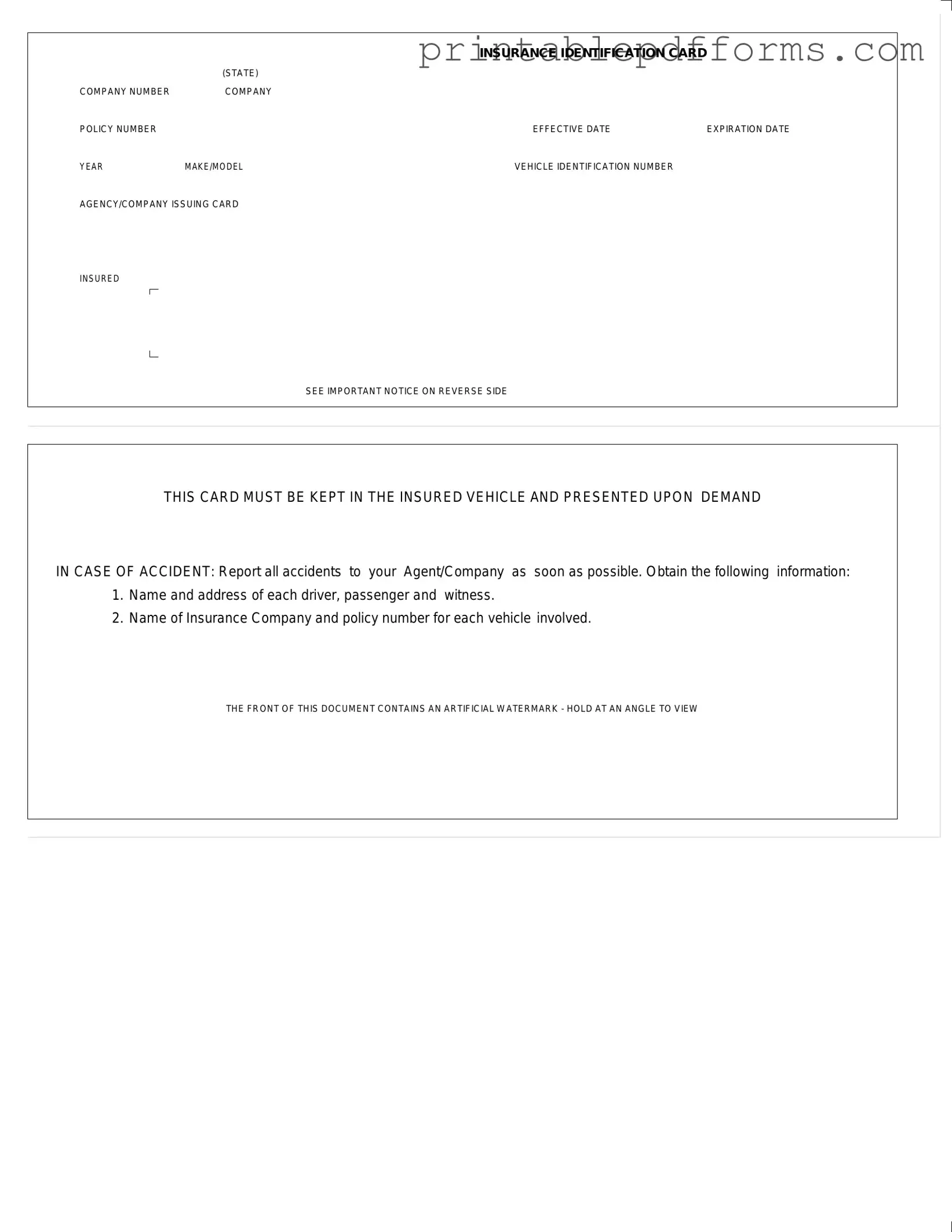The Auto Insurance Card is a crucial document for every vehicle owner, serving as proof of insurance coverage and a vital resource during unforeseen circumstances. This card typically includes essential information such as the insurance company’s name, policy number, and the effective and expiration dates of the coverage. Additionally, it lists the vehicle's year, make, model, and the unique Vehicle Identification Number (VIN), ensuring that the specific vehicle is easily identifiable. The issuing agency or company is also noted, providing clarity on where the insurance is sourced. Importantly, the card carries a directive that it must be kept in the insured vehicle and presented upon demand, particularly in the event of an accident. In such situations, drivers are advised to report the incident to their insurance agent or company immediately and gather necessary details, including the names and addresses of all parties involved, as well as their respective insurance information. Furthermore, the card features an artificial watermark, which can be viewed by tilting the document at an angle, adding a layer of security to this important identification tool. Understanding the components and requirements of the Auto Insurance Card is essential for all drivers, as it not only ensures compliance with legal obligations but also facilitates smoother interactions during emergencies.

